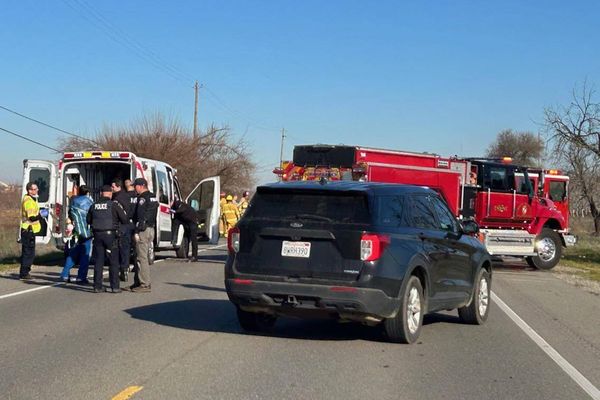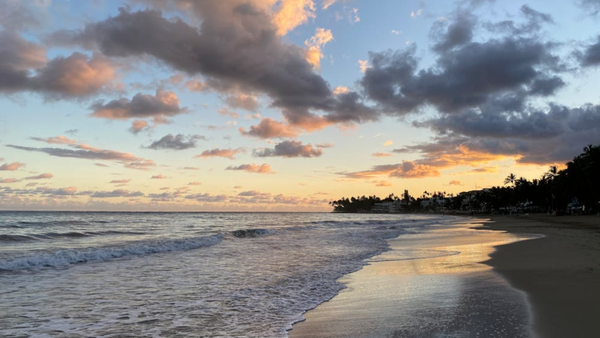For the first time in nine years, there's a new Treasurer holding Tasmania's purse strings.
Michael Ferguson has unveiled the priorities, problems and prices facing Tasmania's $8.3 billion budget less than two months after taking the reins from former premier and treasurer Peter Gutwein.
So, what are the key figures?
Well, economic growth is predicted to remain strong over the next few years, and revenue has been growing too.
But next financial year there is an expected deficit of $474.6 million — the government says that will turn into modest surpluses for the next few years after that.
But when you remove one-off payments from the federal government (for things like the Bridgewater Bridge and the Royal Hobart Hospital redevelopment) the picture looks slightly less rosy, with a deficit of $940.3 million in 2022-23, and deficits for each of the following three years.
Tasmania's debt is increasing too — and more significantly than predicted in last year's budget.
Net debt is expected to double in just one year to almost $3 billion by June 2023 and then rise again to more than $5 billion in 2026.
The unemployment rate is expected to stay at 4.5 per cent.
Where is the money coming from, and where is it going?
The biggest chunk of revenue feeding into Tasmania's coffers comes from the GST, which is divvied up amongst the states by the federal government.
Payments from the federal government, including from GST, make up 65 per cent of Tasmania's revenue.
The rest comes from things like conveyance duty raised from the sale of property, land tax and payroll tax.
Almost a third of budget spending goes into the state's health system (32 per cent) with a quarter going into education and 10 per cent spent on public order and safety.
The budget includes a $5.6 billion infrastructure spend.
More than half of that (54 per cent) will be spent on roads and bridges.
What's being promised?
Many of the budget measures have already been announced.
There's a promised $305 million in concessions to help vulnerable Tasmanians meet the cost of living, including for water bills, electricity and council rates.
The government is also committing to what it calls the "most comprehensive and ambitious affordable housing strategy in Tasmania's history".
That strategy sees $538 million being invested into social and affordable housing and homelessness initiatives over four years – more than $200 million of that next year alone.
The government has promised to build 10,000 new homes over the next decade.
It's ambitious – the budget papers show just 1,254 homes have been built under the Affordable Housing Strategy since 2015.
A big overhaul is also on the way to transform Tasmania's health services — there's $150 million for what the government calls a "game-changing" investment into digital health to improve access to care.
After the coronavirus pandemic forced a big shift into online learning, there's $4 million for more laptops and tablets for students.
There's a GST storm cloud on the horizon
The budget outlines what the government expects money to be spent on but relies on forecasts to decide how things might look over the next few years.
That means plenty of things could change.
The budget papers say there's a risk Tasmania will end up getting too little of the federal GST share in a few years' time, when a "no worse off guarantee" on how the money is split up between the states runs out.
Mr Ferguson used his budget speech to issue a warning to the new federal Labor government that Tasmania, as a small state, "should not be losing out to other states that are swimming in mining royalties and posting multi-billion-dollar surpluses" – a thinly veiled swipe at Western Australia.
With GST making up a big chunk of Tasmania's revenue, that could cause big issues for the budget bottom line.
There's also a risk that rising interest rates could impact the property market, meaning a change in how much Tasmania raises through conveyance duty.
Funding to deliver big energy projects such as Marinus Link and Battery of the Nation hasn't yet been factored in, but they'll need "significant investment" to go ahead.
And, as is always the case, there's a risk that health spending will blow out.
While the federal and state governments have a funding agreement, the annual increase that can be funded by the Commonwealth is capped at 6.5 per cent – that means if costs rise more than that, the state government will have to fork out the difference.
Cost of living is going up, and a wages battle is brewing
Inflation, too, is having an impact.
Hobart's consumer price index is expected to have risen by 4.75 per cent by the end of this financial year, and rise up to 5.5 per cent next year – those figures are well above the long-term average.
But, the budget papers rely on a wage increase for public sector workers of 2.5 per cent — which would mean employees taking home less in real terms.
The budget warns that if public sector workers end up with a bigger pay rise than that, it would have a "negative impact on the budget outcome".
That all means the Tasmanian government will be bracing for a fight with public sector unions over how much more state sector employees should be taking home in their pay packets, as they negotiate the next lot of wages agreements this year.
What else is interesting?
For the first time, the budget papers include a "gender budget statement" outlining measures such as action on family and sexual violence, LGBTIQA+ grants, and funding for men's crisis accommodation.
There's also funding to hire two specialist human resources staff for parliament to help with "training and dispute resolution" at work.
Other spending measures include:
- $760,000 for new pistols for Tasmania Police
- $3.7m for new forensic scientific instruments for police investigators
- $2.75m for sports stadium feasibility studies around the state
- $400,000 for a bike pump track in St Helens
- $140,000 for the LGBTIQA+ grants program to "support community organisations to "increase acceptance of diversity"
- $964,000 for a career pathway program for "young people wanting to work in Tasmania's racing industry"
- $500,000 for the Space Technology Seed Fund, which the government says will "support growth and development" of the Tasmania's "space industry"







